Suchergebnisse für "Factsheet: Energietechnologien gestalten, die für alle sinnvoll und nutzbar sind"
Product Service Systems Water
Based on former FdZ projects in the area of PSS, EMA and Zero Emission PSS Water develops and realises a guideline with which sustainable water management in industry and public utiliies as a service can be offered.
Sustainability Skills - A qualification programme for founders of new businesses
A modular and web-based "Sustainability Skills" qualification programme on how to think, plan, and act in terms of sustainability and how to successfully apply these skills in a business environment.
Schiestlhaus, Hochschwab

An integrated (overall) concept for an ecological alpine refuge hut based on solar energy
Energy Efficient Smart Metering Infrastructure
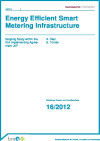
Scoping Study within the IEA Implementing Agreement "4E"
Schriftenreihe
16/2012
A. Diaz, S. Tomek
Herausgeber: BMVIT
Englisch, 87 Seiten
Downloads zur Publikation
Demand Response Potential of the Austrian industrial and commerce sector
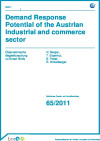
Österreichische Begleitforschung zu Smart Grids
Schriftenreihe
65 /2011
H. Berger, T. Eisenhut, S. Polak, R. Hinterberger
Herausgeber: BMVIT
Deutsch, 291 Seiten
Downloads zur Publikation
Multimedia
DDM Feldkirchen
Demonstration of digitalization measures in heating networks using the example of Feldkirchen district heating network
Energy Workshop Northern Waldviertel

A local " integrated" energy program - successful implementation through research cooperation
Forschungsforum
1/1996
Herausgeber: BMVIT
Englisch, 6 Seiten
Future-Oriented Products And Services
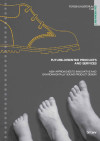
New Approaches to innovative and environmentally sound produc design
Forschungsforum
1/1998
Herausgeber: BMVIT
Englisch, 6 Seiten
Downloads zur Publikation
ENUMIS - Energetic effects of urban manufacturing in the city
The project examines the challenges of urban manufacturing (UM) from the energy perspective and shows opportunities arising from the implementation of UM concepts for the future design of sustainable energy systems for cities.
Biogas as Vehicle Fuel - Economic Feasibility in Austria
The main objectives of this project are to discuss the economic feasibility of the production and distribution of biogas used as transportation fuel and to identify those types of local distribution systems that are already economically feasible under the present economic conditions in Austria.
aspern Vienna´s Urban Lakeside - subproject 3a: Technology Centre aspern IQ
The demonstration project "Technology centre aspern IQ" showed that the energy required for space conditioning (heating, cooling, ventilation, lighting, hot water) can be covered from domestic energy production.
CityCalc - Calculation Tool for Energy-Efficiency in Urban Planning
To assess the energy performance of urban planning projects in early design stages with low input and evaluation effort within the project CityCalc, an easily applicable planning and evaluation tool has been developed.
Connection of innovative strategies and technologies to a holistic, resources-friendly plus energy building (FUTUREbase)
On the basis of a construction project in Giefinggasse 4 in Vienna the combination of new, innovative strategies and technologies to an integrated, resources conserving plus energy building with high signaling and multiplication effect had been tested for feasibility. A regional, energetical bond between the buildings TECHbase, ENERGYbase and the Klima-Windkanal had been developed.
The Sahel Project

Silicate technology for the improvement of water uptake and nutrient storage in marginal soils
Forschungsforum
1/2006
Herausgeber: BMVIT
Englisch, 6 Seiten
Downloads zur Publikation
Carless Tourism In Austria

The valleybus project Lungau, Murau, Nockgebiet - an innovative pilot scheme
Forschungsforum
3/1995
Herausgeber: BMVIT
Englisch, 6 Seiten
Transparent Thermal Insulation
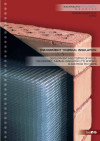
Development and Testing of novel Transparent Thermal Insulatio (TTI) Systems made from Polymers
Forschungsforum
2/2002
Herausgeber: BMVIT
Englisch, 6 Seiten
Downloads zur Publikation
Elaborated Assessment of Competing Smart Grid Solutions (SG-ESSENCES)
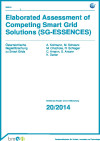
Österreichische Begleitforschung zu Smart Grids
Schriftenreihe
20/2014
A. Kollmann, M. Schwarz, et al.
Herausgeber: BMVIT
Deutsch, 124 Seiten
Downloads zur Publikation
Smart Grids - Rechtliche Aspekte von Intelligenten Stromnetzen in Österreich
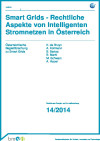
Österreichische Begleitforschung zu Smart Grids
Schriftenreihe
14/2014
K. de Bruyn, A. Kollmann, et al.
Herausgeber: BMVIT
Deutsch, 247 Seiten
Downloads zur Publikation
SUPERBE - Potential of Superblock-concepts as contribution to planning energy-efficient urban quarters
The exploratory study SUPERBE for the first time looks into the applicability and potential effects of Superblock concepts in an Austrian urban context in order to assess their contribution to energy-oriented urban planning.
